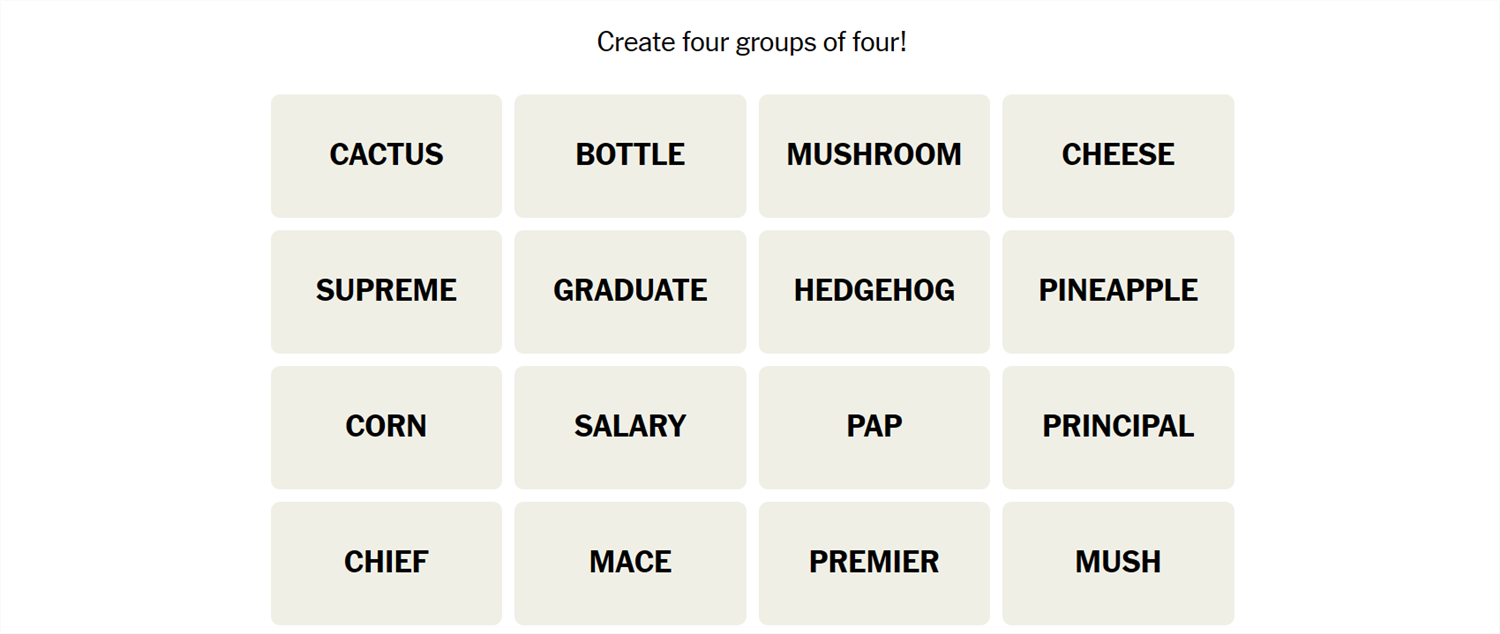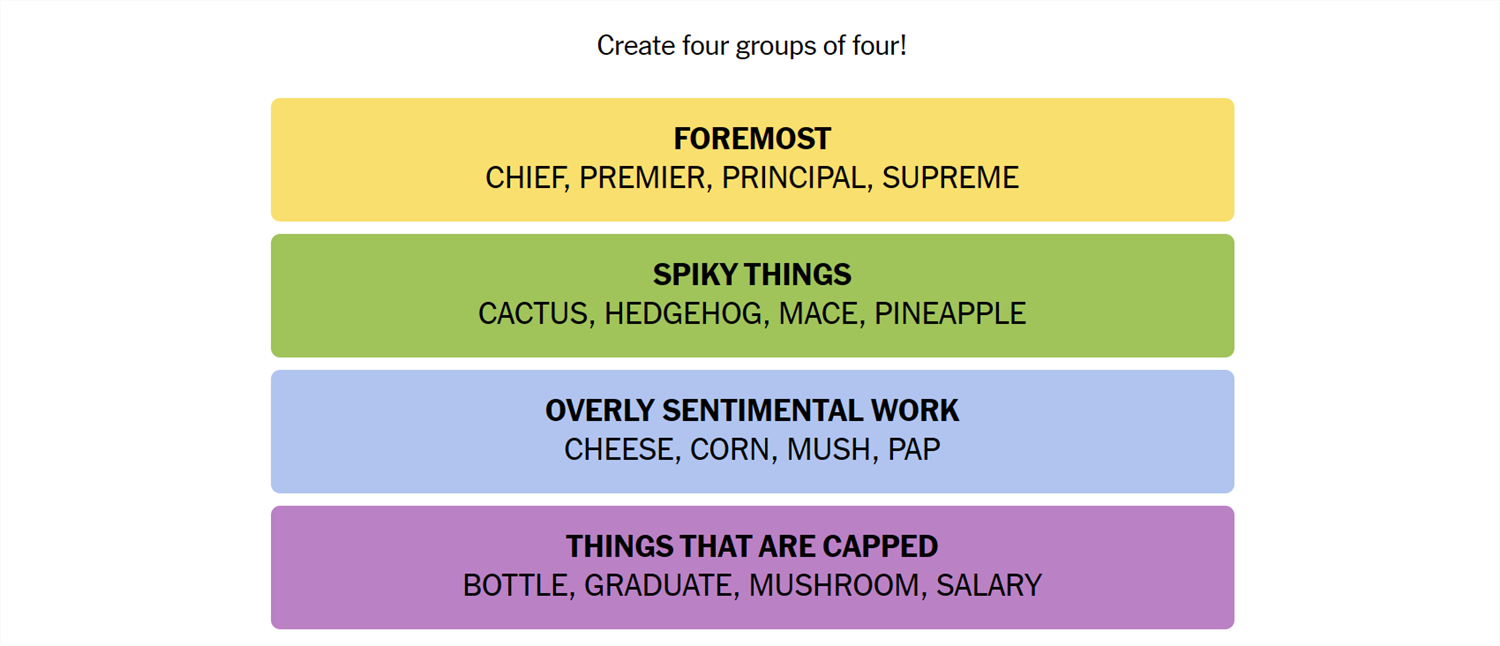Connections is a game from the New York Times that challenges you to find the association between words. It sounds easy, but it isn’t—Connections categories can be almost anything, and they’re usually quite specific. If you need a hand getting the answers, we’ve got you covered.
What Is Connections?
Connections is a game from the New York Times. The objective is simple: sort 16 words into groups of 4. Each group of words will be connected by some common idea or theme. That common element could be anything. We have seen everything from games that rely on the number of letters in the words to categories that require you to spot an extra letter at the end of the word. Sometimes they’re references to economics, other times they reference fairy tales. There is no telling what sort of association there will be between words.
Once you’re confident you understand the connection, select 4 words, then hit “Submit.” You have only four attempts in total, so don’t be too guess-happy.
Hints for Today’s Connections Groups
Here are a few hints for the 463rd Connections game to get you started:
- Yellow: First and ____
- Green: Rose bushes, hawthorns too.
- Blue: When you care a bit too much.
- Purple: When it has a top or maximum.
If you still need help, the actual group names are:
- Yellow: Foremost
- Green: Spiky Things
- Blue: Overly Sentimental
- Purple: Things That Are Capped
Today’s NYT Connections Answers
Foremost (Yellow):
Chief, Premiere, Principal, Supreme
Spiky Things (Green):
Cactus, Hedgehog, Mace, Pineapple
Overly Sentimental Work (Blue):
Cheese, Corn, Mush, Pap
Things That Are Capped (Purple):
Bottle, Graduate, Mushroom, Salary
How Did We Solve This Connections Game?
September 16th wasn’t too hard, though Blue had a term I wasn’t really familiar with.
The first group I noticed consisted of cactus, hedgehog, mace, and pineapple—all things with spikes. They were in the Green group, “Spiky Things.”
Chief, premiere, principal, and supreme all make me think of the first in something, or the most important part of something. That is a pretty strong connection, so I tried them together. They were in the Yellow group, “Foremost.”
Cheese, corn, and mush are all terms we use to describe really sentimental things, and that seemed like a reasonable guess. Bottle, graduate, mushroom, and salary didn’t seem like they could be related, since none of them are related to sentimentality. That left pap—a term I wasn’t really familiar with in this context. However, with no better options, I just went for it. Those 4 words were in the Blue group, “Overly Sentimental Work.”
That left bottle, graduate, mushroom, and salary. After mulling it over for a while, I realized all of the things in question typically have caps. That guess was pretty close. Purple was actually “Things That Are Capped.”
How Do You Guess Connections Groups?
There is no quick, reliable way to approach Connections like there is with Wordle, since Connections isn’t algorithmic. However, there are a few things to keep in mind that can help.
- Look for similar parts of speech. Are some words verbs and others nouns? Are some adjectives? Try mentally grouping them based on those categories and see if any other patterns jump out at you.
- Are the words synonyms? Sometimes categories will just be synonyms for a phrase, or very close to synonyms. Don’t rely too closely on this, though. Occasionally, Connections will deliberately throw in words that are sometimes synonyms to mislead you.
- Try saying the words. Sometimes, saying the words helps. One puzzle we saw included the words go, rate, faster, clip, pace, speed, move, commute, and hurry—all of which are obviously related to the idea of motion. However, when you say them, it becomes a little more obvious that only four (go, move, hurry, faster) are things you’d actually say to prompt someone to get moving.
- Expect the red herring. Connections usually has words that could be plausibly, yet incorrectly, grouped together. Take the words Bud, Corona, and Light, as an example. You might instinctively see those three words together and assume they’re lumped together in a category related to beer—but they weren’t.
- Look for distinct words. If a word on your board doesn’t have multiple meanings or can really only be used in one context, try using that word as the basis for a category.
- Shuffle the board. Sometimes, moving words around will help you look at them in new ways.
If you didn’t solve this one, don’t feel too bad—there’s always tomorrow! And those words may align with a topic you’re interested in, giving you a leg up on the competition.






